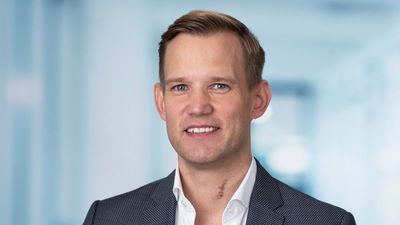Mr Streeck is a professor for virology and the director of the Institute of virology and HIV Research at the University Bonn. He explained the methodology of his new study in Heinsberg, the “epicentre” of Germany’s COVID-19 outbreak, and talked about potential plans for a country to move forward gradually in getting back to a “normal” life, RTL said.
During recent weeks, his team completed substantial research conducted through surveys and investigations in homes across the Heinsberg region - where more than 1,400 confirmed cases had been reported. Heinsberg has an approximate population of 250,000 inhabitants and has confirmed 46 coronavirus-related deaths.
These research findings have already provided some indication on how the virus works, as Streeck clarified:
“There is no significant risk of catching the disease when you go shopping. Severe outbreaks of the infection were always a result of people being closer together over a longer period of time, for example the après- ski parties in Ischgl, Austria.” He could also not find any evidence of ‘living’ viruses on surfaces. “When we took samples from door handles, phones or toilets it has not been possible to cultivate the virus in the laboratory on the basis of these swabs….”
“To actually 'get' the virus it would be necessary that someone coughs into their hand, immediately touches a door knob and then straight after that another person grasps the handle and goes on to touches their face.” Streeck therefore believes that there is little chance of transmission through contact with so-called contaminated surfaces.
The fact that COVID 19 is a droplet infection and cannot be transmitted through the air had previously also been confirmed by virologist Christian Drosten of Berlin's Charité. He had pointed out in an interview that coronavirus is extremely sensitive to drying out, so the only way of contracting it is if you were to “inhale the droplets.”
However, there are different findings on how the coronavirus spreads. Experts from the US Institute of Health CDC and NIH had come to the conclusion that the virus can survive 24 hours on paper, three hours in aerosols and up to three days on plastics and stainless steel. As the Robert Koch Institute states on their website, however, scientific studies like this are realised under experimental conditions, which is why they are not very representative for the risk of transmission in daily life.
Heinsberg will now be the centre for conducting another study, which goes deeper, aiming to further evaluate how the virus spreads and how it can be contained. The study will follow a representative sample of 1,000 people.
“The results from this more detailed study could then serve as a basis for recommendations for national exit strategies out of the lockdowns,” offers Streeck.
“It is important to obtain this data in order to make sure that decisions are taken based on facts rather than assumptions. The data should serve as a basis of information for the government so they can then think about their further course of action,” he continues.
Streeck says that Heinsberg offers an ideal situation to find answers for the rest of Germany, maybe even Europe or indeed for the whole world.
Regarding the measures currently put in place, he personally thinks that it is important to bear in mind the potential negative effects that some measures might bring:
“People could lose their jobs. They might not be able to pay their rent anymore and staying inside for a longer time can lead to weakening of our immune system.” He raises questions like: “The goal is not a complete containment of the virus. We need to know where the actual capacity limits of our hospitals are. How many infections are too many? What do intensive care medics say?”
“It is important to start thinking about a “rollback” strategy and his hope is to “deliver the relevant facts so that people have a good foundation for their decisions.”
The primary results of the “Covid- 19 case cluster study” in Heinsberg are expected to be presented by the end of next week.













